Awareness of green transformation in logistics in Vietnam
The benefits of green transformation in logistics are huge, not only stops at protecting the environment but also creates economic advantages, meets customer and market requirements, and enhances business reputation. Specifically, the basic benefits of green transformation in logistics include:
Firstly, green transformation in logistics helps businesses reduce emissions and energy consumption; thereby, reducing costs. Investing in fuel-efficient vehicles, route optimization, digital warehouse management, recycling and reusing packaging… is not only good for the environment but also reduces the burden of long-term costs. By focusing on minimizing waste, businesses can build a more efficient and profitable logistics system in the long run.
Second, green transformation in logistics helps businesses meet the increasingly high demands of customers, especially when green logistics becomes the new standard in many export markets. New generation free trade agreements, such as the Vietnam - EU Free Trade Agreement (EVFTA), the Comprehensive and Progressive Agreement for Trans- Pacific Partnership (CPTPP) ... make environmental standards become specific binding for businesses. The European Union (EU) implements the CBAM mechanism (Carbon Border Adjustment Mechanism) - imposing carbon tax on high-emission imported goods and promulgating the Corporate Sustainability Reporting Directive (CSRD), requiring businesses to publicly disclose information on environmental, social and governance (ESG) impacts. These mean that without green transformation in logistics, businesses will not be able to meet market requirements.
Third, green transformation in logistics helps businesses enhance reputation and position in an increasingly competitive market. When one Enterprises that achieve green certifications in logistics, such as LEED certification - a certificate for green construction projects issued by the US Green Building Council or LOTUS - a Vietnamese green building standard, issued by the Vietnam Green Building Council for warehouses, will create a huge competitive advantage compared to enterprises that do not achieve these certifications. That advantage can help enterprises sign contracts with major partners, especially partners who prioritize green practices and promote greening the supply chain.

Recognizing that importance, Vietnam has proposed many policies to promote green transformation in logistics:
Vietnam's international commitments on climate change and greenhouse gas emissions: Vietnam signed the United Nations Framework Convention on Climate Change in 1992 and ratified it in 1994; signed the Kyoto Protocol in 1998 and ratified it in 2002. On October 28, 2016, the Prime Minister issued the Plan for Implementation of the Paris Agreement, with 68 important tasks assigned to ministries, branches, localities and enterprises to carry out until 2030. At the 26th Conference of the Parties to the United Nations Framework Convention on Climate Change (COP26), for the first time, Vietnam strongly committed to achieving net emissions of "0" by 2050... Immediately after that, on December 21, 2021, the Prime Minister issued Decision No. 2157/QD-TTg, establishing the National Steering Committee to implement Vietnam's commitments at COP26, with the Prime Minister as Head of the Steering Committee.
General strategies and plans related to green growth, sustainable development and circular economy : On November 17, 2020, the National Assembly passed the Law on Environmental Protection, regulating environmental protection activities; rights, obligations and responsibilities of agencies, organizations, communities, households and individuals in environmental protection activities. Then, on March 12, 2021, the Prime Minister signed Decision No. 343/QD-TTg, "Promulgating the Plan for implementing the Law on Environmental Protection in 2020". The “National Strategy on Green Growth for the 2021-2030 period , with a vision to 2050” was issued on October 1, 2021, under Decision No. 1658/QD-TTg of the Prime Minister, setting the goal of transforming the growth model towards greening economic sectors, applying the circular economic model through the exploitation and economical and efficient use of natural resources and energy to improve growth quality, promote competitive advantages and minimize negative impacts on the environment. On June 7, 2022, the Prime Minister approved the “Circular Economic Development Project in Vietnam” with the general goal of moving towards a green, carbon-neutral economy and limiting global temperature rise.
Regulations and policies directly related to green transformation in logistics : In 2010, the Ministry of Transport issued Circular No. 16/2010/TT-BGTVT, dated June 30, 2010, "Regulations on management and exploitation of airports". The Circular clearly states that airport and airport planning and investment projects must have environmental impact assessment reports and will be inspected and monitored for the implementation of environmental protection solutions, compliance with environmental protection laws, civil aviation laws, Vietnamese environmental standards and international treaties to which Vietnam is a party. Regarding reverse logistics for waste recovery, Decree No. 38/2015/ND-CP of the Government on “Waste and scrap management”, including hazardous waste, domestic solid waste, industrial solid waste, liquid waste, wastewater, industrial emissions and visible waste.
Resolution No. 26 /NQ-CP dated March 5, 2020 of the Government, “Promulgating the Master Plan and the 5-year Plan of the Government to implement Resolution No. 36-NQ/TW dated October 22, 2018 of the 8th Conference of the 12th Party Central Committee on the Strategy for sustainable development of Vietnam's marine economy to 2030, with a vision to 2045”, pays great attention to sustainable development of the marine economy, including sustainable development of logistics. On October 29, 2020, the Ministry of Transport approved the Project on green port development in Vietnam. On that basis, the Vietnam Maritime Administration issued the Plan to implement the Project on green port development in Vietnam, according to which after 2030, green port criteria will be mandatory in planning, investment in construction and business exploitation of seaports in Vietnam.
The Government also issued legal documents related to quality inspection, technical safety and environmental protection of means of transport. On July 22, 2022, the Prime Minister issued Decision No. 876/QD-TTg, “Approving the Action Program on green energy conversion, carbon and methane emissions reduction of the transport sector”, with the general goal of developing a green transport system towards the goal of net greenhouse gas emissions of “0” by 2050.
As for the Ministry of Industry and Trade - the agency assigned to perform the function of state management of logistics - since the beginning of 2024, it has been advising and submitting to the Prime Minister a draft Strategy for the development of Vietnam's logistics services for the period 2025 - 2035, with a vision to 2050. The draft provides directions for improving the competitiveness of logistics service enterprises, while improving the quality and greening of logistics service activities based on digital platforms. When issued, the Strategy will become an important lever for the green transformation of Vietnam's logistics industry.
The current status of green transformation in logistics in Vietnam
The survey results of the Vietnam Logistics Research and Development Institute reflect the reality that 73.2% of logistics enterprises have included green logistics in their development strategies, but most have not implemented it systematically, due to the lack of specific guidance as well as limited financial support and internal capacity. Below is the current status of green transformation in each logistics activity in Vietnam:
Green transformation in road transport
Currently, in freight transport in Vietnam, about 75% of goods are still transported by road, while sea transport accounts for only 12% and rail accounts for 2%; at the same time, up to 95% of means of transport still depend on fossil fuels, leading to an average annual emission of more than 50 million tons of CO 2 by transportation activities in Vietnam and is forecast to reach 90 million tons of CO 2 by 2030. Of which, road transport accounts for 85% of emissions and is forecast to increase by an average of 6 - 7% per year. In addition, the survey results of the Ministry of Industry and Trade show that 33% of enterprises have empty vehicles for the return trip; of which, 39% of enterprises have empty vehicles for the return trip at a rate of less than 10%, while up to 40.3% of enterprises have empty vehicles for the return trip at a rate of 10 - 30%. In particular, 13% of businesses have a return empty vehicle ratio of over 50%. This is one of the reasons leading to reduced efficiency of transportation activities, increased carbon emissions into the environment and many other consequences such as noise pollution, traffic congestion...
Green transformation in maritime transport
Regarding maritime transport, according to statistics from the Vietnam Maritime Administration (2023), the Vietnamese fleet has 976 ships with an average age of about 19 years, an increase of 4 years compared to 2018; most still lack automation systems and green, fuel-saving technology; most of the cargo handling equipment on ships is also outdated. For example, about 70% of Vietnamese container ships still use traditional mechanical cranes, only about 30% use semi-automatic or automatic cranes. This situation causes the Vietnamese fleet to frequently face technical problems; high maintenance and repair costs and negative impacts on the environment. Regarding seaports, out of a total of 36 seaports with 286 berths, only 3 ports have received the Green Port Award from the APEC Port Services Council (APSN), namely Tan Cang - Cat Lai Port in 2018, Tan Cang - Cai Mep International Port (TCIT) in 2020 and Gemalink Port in 2024.
Green transformation in air transport
Currently, the country has 22 operating airports (9 international airports and 13 domestic airports). The international aviation market has more than 30 foreign airlines and 5 Vietnamese airlines operating 98 international routes to 20 countries/territories. Of which, Vietnamese airlines have operated 68 international routes to 16 countries/territories. From January 1, 2026, the Civil Aviation Authority of Vietnam will participate in the voluntary phase of the Global Mechanism for Carbon Offsetting and Reduction Scheme for International Aviation (CORSIA) initiated by the International Civil Aviation Organization (ICAO). This is an important step in the green transformation of air transport, but also poses a major financial challenge for domestic airlines.
Green transformation in rail transport
Rail freight transport in Vietnam is currently undertaken by a national railway network of 3,143km with 7 main lines and 277 stations. Currently, Vietnam Railways is operating 244 locomotives and 80 electric-generating service cars using the second technology platform, diesel technology (while developed countries are mainly using the third technology - electrification and the fourth technology - electromagnetic). This is the most significant source of greenhouse gas emissions in rail transport operations in Vietnam today. Therefore, Vietnam sets a goal by 2040 to partially stop the production, assembly and import of railway vehicles and equipment using fossil fuels; gradually invest in new ones and convert to railway vehicles using electricity and green energy. By 2050, 100% of railway locomotives and cars will be converted to use electricity and green energy; Convert 100% of equipment using fossil fuels to electricity and green energy at stations...
Green transformation in warehouse systems
The warehouse system in Vietnam currently has more than 4 million square meters for lease with an average growth rate of 23% per year in the period 2020 - 2023 and is forecast to remain high in the coming period. According to the survey results on the level of greening in warehouses by the Ministry of Industry and Trade, 68.6% of enterprises said that they have not used renewable energy in warehouse operations at the enterprise or have not rented warehouses using renewable energy. Regarding the reason, 65.3% of enterprises stated that they do not have enough resources to design an operating system and 29.2% of enterprises said that the cost of setting up a warehouse system using renewable energy is high, making it impossible for enterprises to invest. Of the 31.4% of enterprises that have used renewable energy in warehouse operations, 81.8% of enterprises use solar energy; 18.2% use energy from hydroelectric sources; 12.1% use wind energy.
Green transformation in packaging
The size of the Vietnamese plastic packaging market is expected to increase from 10.07 million tons in 2023 to 15.09 million tons in 2028, with an average annual growth rate of 8.44% in the 5-year period 2023 - 2028. The size of the paper packaging market is expected to increase from 2.37 billion USD in 2023 to 3.77 billion USD in 2028, with an average annual growth rate of 9.73%. A positive sign of green transformation in packaging in Vietnamese enterprises according to the survey results of the Ministry of Industry and Trade is that 42.9% of enterprises use environmentally friendly packaging such as paper, carton and 1.2% of enterprises use wooden packaging. According to Decree No. 08/2022/ND-CP, dated January 10, 2022, of the Government, detailing a number of articles of the Law on Environmental Protection 2020, single-use plastic packaging, non-biodegradable plastic (including non-biodegradable plastic bags, foam food packaging boxes) will not be circulated and used in shopping malls, supermarkets, hotels, and tourist areas after 2025. From January 1, 2026, Vietnam will reduce the production and import of small-sized non-biodegradable plastic bags. After 2030, the Government aims to completely stop the production and import of single-use plastic, non-biodegradable plastic bags, and foam food containers.
Green transformation in logistics information systems
Digital transformation is considered an important solution to promote the green transformation process in logistics. However, according to the assessment of the Ministry of Industry and Trade, 90% of logistics service enterprises in Vietnam are only in the stage of digitizing logistics information systems. This is reflected in the fact that up to 97.8% of enterprises only use common system software such as Microsoft Excel and Google Sheets for daily logistics operations; the automatic customs declaration system (VNACC) is also commonly used at a rate of 94.8% due to mandatory requirements of national administrative reform. Meanwhile, delivery management systems (FMS), customer relationship management (CRM), transportation management (TMS), warehouse management (WMS), order management (OMS) that are capable of bringing optimal efficiency to the logistics system have much lower usage rates, respectively 34.3%; 32.1%; 11%; 10.1% and 6.3%.
Proposing policies and solutions for green transformation in logistics in Vietnam
To promote the green transformation process in logistics in Vietnam, there needs to be a harmonious combination of incentive policies and legal regulations with proactive search and implementation of green transformation solutions in logistics activities at enterprises.
Policies from the State
Firstly , the State needs to plan and build a green infrastructure network, especially modern multimodal transport infrastructure to promote and support the green transformation process in logistics of businesses and the entire economy.
Second , continue to perfect the synchronous legal framework for green transformation activities in logistics, avoiding overlap between ministries and branches; especially regulations on controlling soil, water, air and noise pollution; mechanisms for controlling greenhouse gas emissions, and transparent disclosure of ESG information.
Third , promote the application of information technology in reforming administrative procedures related to logistics such as electronic customs system, certificate of origin of goods, export and import taxes, post-clearance inspection, etc.

Fourth , raise awareness among businesses about green transformation in logistics and the importance of logistics solutions that minimize environmental impacts. At the same time, support training of human resources for green transformation in logistics because most businesses lack a team of experts with knowledge and capacity to implement green logistics as well as lack professional consulting units.
Fifth , develop a set of criteria to measure the level of green logistics development or a green logistics performance index to guide implementation, support control and evaluate green logistics activities at enterprises on a regular basis; from there, enterprises have a basis to come up with appropriate and effective solutions.
Sixth , develop a financial system for green transformation in logistics. This is considered the most important solution, strongly promoting the green transformation process in logistics in Vietnamese enterprises - most of which are small and medium-sized, while green transformation in logistics requires a large investment cost. The financial system for green logistics needs to develop synchronously, including: (1) Green financial market to promote capital flow into projects to reduce emissions and optimize resource use; (2) Green financial instruments to help direct capital into logistics activities such as green bonds, green credit, green tax deductions, green credit guarantees; (3) Green financial institutions providing financial services and performing an intermediary role in capital mobilization and allocation such as green commercial banks, national environmental funds, insurance organizations and ESG credit ratings; (4) Green financial infrastructure such as carbon credit market and carbon pricing, open data infrastructure for emission measurement, standardization of ESG reporting, etc.
Green transformation solutions in logistics at Vietnamese enterprises
Firstly , businesses need to build and perfect a green transformation strategy in logistics. For businesses that do not have a green transformation strategy in logistics, it is necessary to build a strategy or integrate the greening goals of logistics activities into the overall business goals of the business. For businesses that are interested in implementing greening solutions for logistics activities or have determined the goal of developing green logistics in their business strategy, it is necessary to regularly review the content of the strategy to adjust it to meet the increasingly high demands of the market.
Second , businesses need to quickly convert the technology used in the exploitation and operation of logistics activities. First of all, businesses need to minimize or not use outdated technologies, internal combustion engine technology using fossil fuels to switch to using modern, environmentally friendly technology, using zero-emission or low-emission fuels such as liquefied natural gas (LNG), solar power, wind power, etc. Moving forward, Apply new technology and artificial intelligence (AI) to optimize green logistics and minimize emissions and energy consumption.
Third , businesses need to increase the conversion of means of transport, in which priority is given to the use of waterways, railways, and multi-modal transport instead of roads and airways. Because waterways and railways have much greater transport efficiency when compared with the same amount of fuel consumed. Therefore, when switching to using and exploiting the transport capacity of these means of transport, businesses will reduce CO2 emissions into the environment.
Fourth , businesses need to transform the process of exploiting and operating logistics activities to simplify procedures, documents, and papers; reduce unnecessary operations, minimize the possibility of errors; save time, costs, energy, and reduce emissions to the environment. For example, in the transportation process, it is necessary to maximize the vehicle's load capacity, arrange optimal delivery routes, and reduce empty vehicles on the return trip; in the warehouse process, it is necessary to optimize the process of importing, exporting, and preserving goods in the warehouse, creating conditions for faster transportation of goods, thereby reducing emissions to the environment and the amount of fuel used; organize statistics and periodically evaluate facilities and equipment to have a plan for innovation and reduce negative impacts on the environment.
Fifth, it is necessary to strengthen cooperation and resource sharing between logistics service providers and users; between businesses in the supply chain to spread and promote the green transformation process in logistics, build an integrated green logistics model from production to transportation and product distribution, to optimize efficiency and minimize environmental impact throughout the chain.
Sixth, promote emission offset activities through absorption measures by trees. The larger the number of trees, the higher the absorption capacity. Therefore, businesses need to demonstrate responsibility and contribute to the greening of logistics activities by actively planting forests or purchasing carbon credits from forest planting units.
Seventh , take advantage of the State's incentives and support for the greening process of logistics activities in enterprises. Enterprises need to take advantage of the support, encouragement, and incentives of the Government and other organizations to invest in green transformation solutions for logistics activities in enterprises./.
Source: https://tapchicongsan.org.vn/web/guest/kinh-te/-/2018/1164002/chuyen-doi-xanh-trong-logistics--chinh-sach-va-giai-phap-cho-doanh-nghiep-viet-nam.aspx










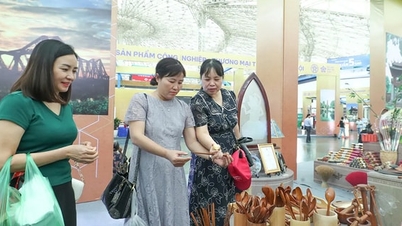

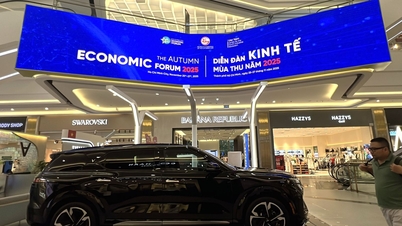

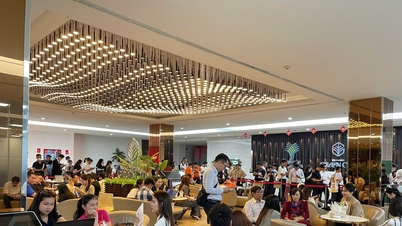




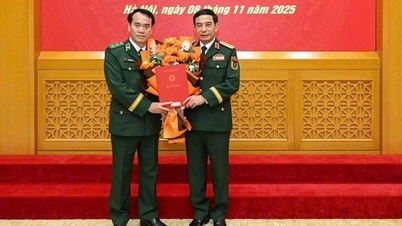


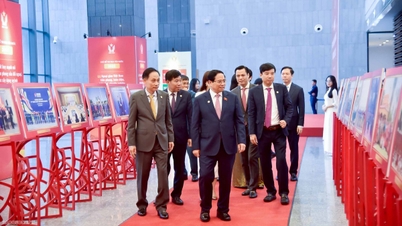



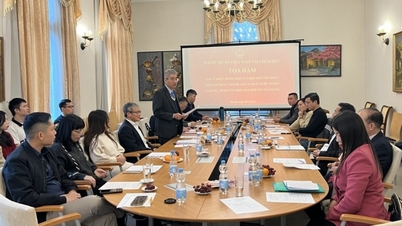







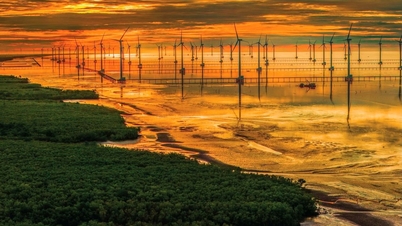








































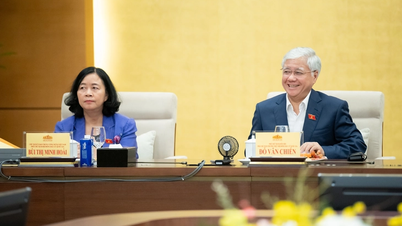









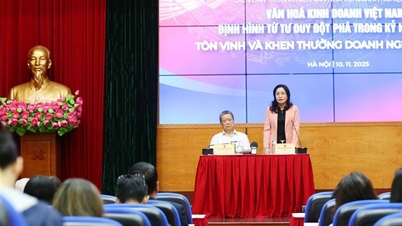



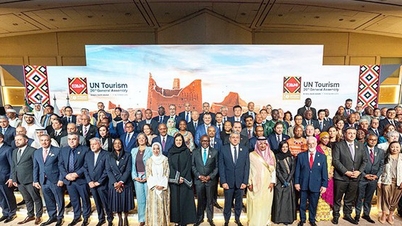




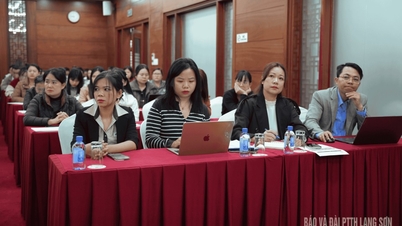


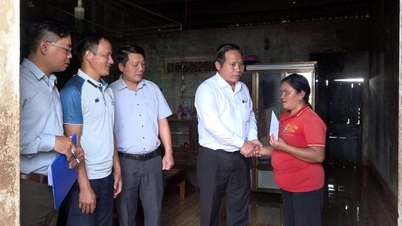


![Dong Nai OCOP transition: [Article 3] Linking tourism with OCOP product consumption](https://vphoto.vietnam.vn/thumb/402x226/vietnam/resource/IMAGE/2025/11/10/1762739199309_1324-2740-7_n-162543_981.jpeg)








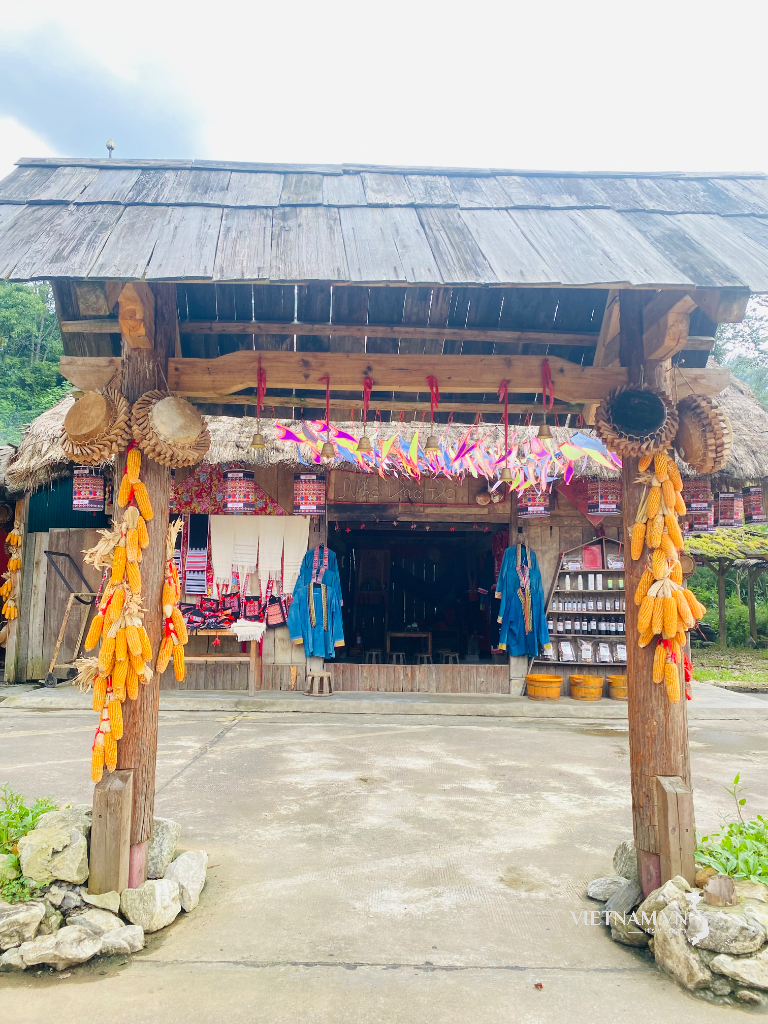

Comment (0)